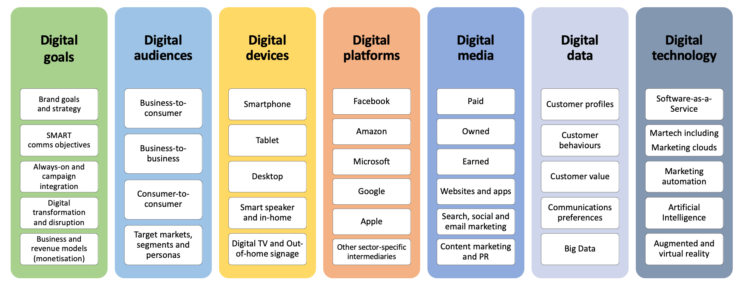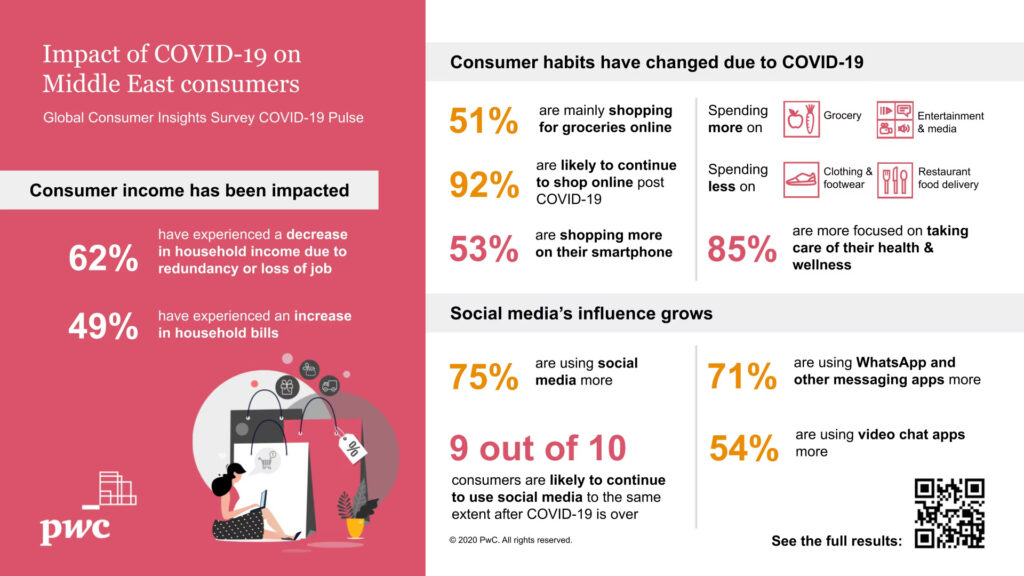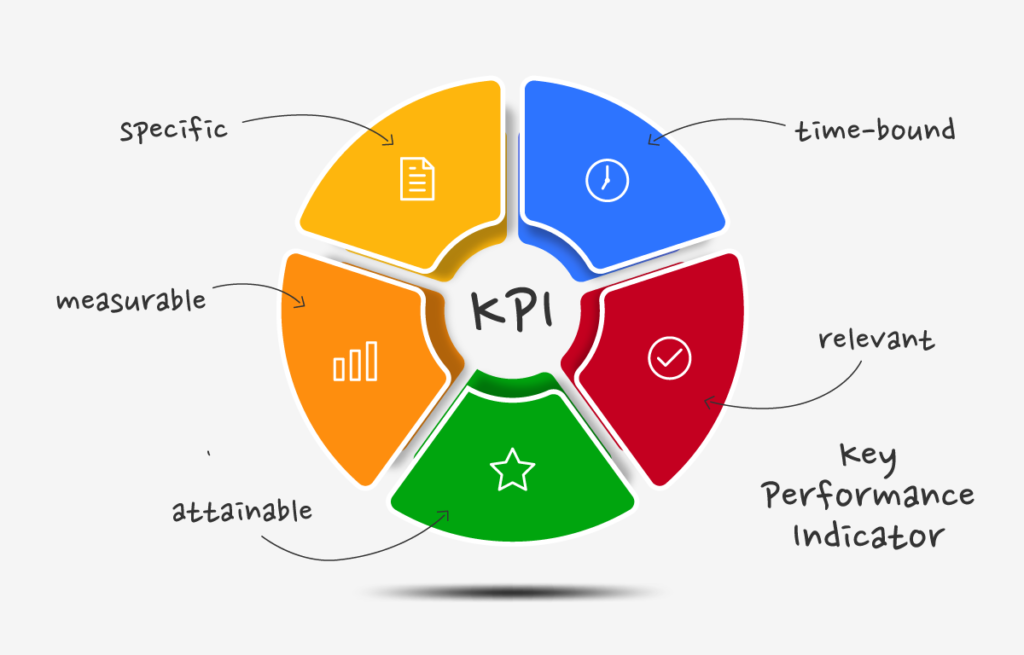The marketing landscape has undergone a significant transformation from traditional to digital methods. This shift has revolutionized marketing strategies, impacting businesses across industries. Adapting to digital platforms is crucial for companies aiming to stay competitive and relevant in today’s fast-paced market.
Embracing digital transformation offers unparalleled opportunities for reaching wider audiences and engaging with customers on a more personal level. As businesses navigate this evolution, understanding the importance of leveraging digital channels becomes paramount in driving growth and brand visibility.
According to the Amra & Elma LLC Research
Digital marketing generates 50% more interactions with customers than traditional marketing.
Traditional advertising spending is expected to increase by 0.55% in the next 12 months, while digital marketing spending is projected to increase by 13.59%.
Understanding Traditional Marketing
Core Principles
Understanding the fundamental concepts of digital marketing is crucial for a successful transition from traditional to digital strategies. Digital marketing relies on key principles such as targeted audience engagement, data-driven decision-making, and leveraging various online platforms to reach potential customers. The core elements shaping the foundation of digital marketing include search engine optimization (SEO), content marketing, social media engagement, and email campaigns.
Digital marketing’s current impact on consumer behavior is profound, with an increasing number of people turning to online sources for product research and purchases. Understanding this shift in behavior is essential for creating effective digital marketing strategies that resonate with modern consumers. The role of technology in enhancing the effectiveness of digital marketing cannot be overstated, as it enables personalized messaging, real-time interaction, and precise targeting based on consumer preferences and behaviors.
Key Advantages
The advantages of digital marketing over traditional methods are evident in its ability to reach a larger audience at a lower cost. Leveraging data for targeted and personalized marketing efforts allows businesses to tailor their messages according to specific demographics or individual preferences. The cost-effectiveness and measurable return on investment (ROI) associated with digital marketing make it a highly attractive option for businesses looking to optimize their advertising budgets.

Images Source: Webfries
In today’s competitive landscape, understanding the potential drawbacks and challenges of digital marketing strategies is crucial. Risks associated with data privacy and security pose significant concerns that need to be addressed through ethical data handling practices and compliance with regulations such as GDPR (General Data Protection Regulation). Moreover, overreliance on technology can lead to potential disadvantages such as algorithm changes affecting search engine rankings or platform policy updates impacting advertising strategies.
The evolution from traditional advertising to digital has opened up new avenues for businesses to connect with their target audiences more effectively. By embracing the core principles driving successful digital marketing strategies while being mindful of its potential drawbacks, businesses can navigate this transition successfully.
Exploring Digital Marketing
Digital marketing sets itself apart from traditional approaches through its unique characteristics. Unlike traditional methods, digital marketing integrates various online channels, such as social media, email, and search engines, to reach and engage with the target audience. The dynamic and interactive nature of digital marketing allows for personalized communication with consumers, fostering a more engaging brand-consumer relationship.
Advantages
One of the significant advantages of digital marketing is its targeted approach. Marketers can tailor their strategies to specific audience segments based on demographics, interests, or behaviors, maximizing the relevance and impact of their campaigns. Real-time engagement and interaction with consumers are facilitated through digital platforms, enabling immediate feedback and response mechanisms. Digital marketing offers flexibility and adaptability for quick adjustments in campaigns based on real-time performance data and market trends.

Image Ref: Smartyads
Digital marketing enables businesses to reach a global audience but also introduces potential disadvantages. The digital space may become saturated with competitors vying for consumer attention. Standing out amidst the noise in digital platforms becomes a challenge for brands aiming to capture their audience’s interest effectively. Moreover, negative feedback can spread rapidly in the digital realm, posing reputational risks that demand vigilant management.
The 5 Ds in Digital Marketing

Image Source: Dr Dave Chaffey
Understanding the concept of the 5 Ds – digital devices, digital platforms, digital media, digital data, and digital technology – is crucial in modern marketing strategies. Incorporating these elements into comprehensive campaigns ensures that businesses leverage the full potential of the interconnected digital landscape. By strategically utilizing different devices (such as smartphones and tablets) and platforms (like social media and websites), marketers can create seamless brand experiences across various touchpoints.
Innovative technologies have transformed how companies engage with consumers through their marketing efforts. For instance, the advent of augmented reality (AR) has empowered brands to offer immersive experiences to their audiences by overlaying virtual elements onto real-world environments.
The Evolution of Digital Marketing

Source : Six Degree
Historical Context
The evolution from traditional advertising to early forms of online marketing marks a significant shift in how businesses connect with their audience. This transition began with the inception of email marketing, banner ads, and search engine optimization (SEO). As digital technologies advanced, milestones such as the launch of Google AdWords in 2000 and the rise of social media platforms further revolutionized digital marketing. These key developments have reshaped the landscape of advertising and consumer engagement.
Technological Advances
Technological innovations have profoundly impacted digital marketing strategies, enabling businesses to reach and engage with their target audience more effectively. Artificial Intelligence (AI) has empowered marketers to personalize content, predict consumer behavior, and automate processes. Augmented Reality (AR) and Virtual Reality (VR) have transformed customer experiences by offering immersive interactions with products or services. Moreover, big data and analytics play a pivotal role in driving technological advances within digital marketing, providing valuable insights into consumer preferences and behaviors.
Changing Consumer Behavior
The rise of digital platforms has led to significant shifts in consumer behavior, influencing how individuals interact with brands and make purchasing decisions. With the convenience and accessibility offered by online shopping, consumers increasingly prefer the ease of browsing products or services from the comfort of their homes. The reliance on social media platforms for product research and recommendations has become a defining factor in shaping consumer decision-making processes.

In today’s digitally driven world, understanding the historical context of digital marketing provides valuable insights into its transformation over time. From its humble beginnings as an alternative to traditional advertising to becoming an integral part of business strategies worldwide, digital marketing continues to evolve at a rapid pace.
As technological advancements shape this evolution, businesses must adapt their strategies to leverage AI-driven personalization techniques or incorporate AR/VR experiences into their campaigns. By recognizing these changes in consumer behavior influenced by digital platforms’ prevalence, companies can tailor their approaches to meet evolving needs effectively.
Understanding these fundamental aspects is crucial for marketers navigating this dynamic landscape while striving for relevance and resonance with their target audiences.
Comparing Marketing Approaches

Strategy Differences
Traditional and digital marketing strategies differ significantly in their approaches. Traditional marketing often involves mass media, such as television, radio, and print ads, while digital marketing focuses on online platforms like social media, search engines, and email. Tailoring content for different online channels is a key strategy difference in the digital realm. For example, content for Instagram may be visually appealing and concise, while content for LinkedIn might be more professionally oriented and longer-form. Embracing real-time interactions is a distinct strategy difference in digital marketing. This involves engaging with customers instantly through comments on social media posts or live chat support on websites.
It’s essential to understand the unique requirements of each approach. For instance, creating compelling visual content is crucial for digital platforms like Instagram or TikTok due to their emphasis on visuals and short-form videos. On the other hand, traditional marketing channels like television or billboards require captivating visuals that can quickly grab attention amidst other distractions.
Impact Assessment

Measuring success through key performance indicators (KPIs) is crucial when assessing the impact of both traditional and digital marketing efforts. In traditional marketing, KPIs may include metrics such as brand awareness surveys or reach estimates from television viewership data. Conversely, digital marketers rely on analytics tools to comprehensively assess impact by tracking metrics like website traffic, conversion rates, click-through rates (CTRs), and engagement levels across various online platforms.
In terms of impact assessment in the context of from traditional to digital marketing transition discussed earlier in this blog post series about “The Evolution of Digital Marketing,” understanding how KPIs shift from measuring TV ratings or magazine circulation to tracking website visits or social media engagement can provide valuable insights into the evolving landscape of marketing.
Cost Efficiency
Digital marketing offers cost-effective advantages due to its targeted reach and reduced overhead costs compared to traditional methods. By leveraging social media advertising or search engine optimization (SEO), businesses can maximize their return on investment (ROI) through efficient allocation of resources. Furthermore, automation tools play a significant role in improving cost efficiency within digital marketing by streamlining repetitive tasks such as email campaigns or social media scheduling.
Transitioning from traditional to digital marketing allows businesses to harness the power of data-driven decision-making processes that enhance cost efficiency while delivering impactful results.
Transition to Digital Marketing
Strategy Shift
Businesses are increasingly recognizing the necessity of adapting their marketing strategies to a more digitally-focused approach. This shift involves moving away from traditional advertising methods and embracing a more dynamic, digitally-driven strategy that resonates with modern consumers. Adapting to changing consumer preferences through strategic shifts is crucial for staying relevant in today’s fast-paced digital landscape.
Integration Challenges
One of the significant hurdles in transitioning to digital marketing is overcoming integration challenges when merging traditional and modern approaches. Businesses need to ensure seamless integration across various online platforms, ensuring a cohesive brand presence. Addressing compatibility issues when integrating diverse technologies is essential for maintaining operational efficiency and delivering a consistent customer experience.
Success Stories
Showcasing successful case studies that highlight the effective implementation of digital strategies can provide valuable insights for businesses looking to make the transition. Recognizing brands that have excelled through innovative use of digital platforms serves as inspiration for others seeking to leverage these channels effectively. Learning from real-world examples helps understand the potential impact of successful campaigns and provides actionable takeaways for implementing similar strategies.
Examples
- Ikea’s Digital Marketing Success Story
- Strategy: Ikea leveraged technology to create an engaging campaign around their furniture brand. They utilized YouTube videos and blog posts to illustrate how small spaces could be maximized for lifestyle enhancement. Importantly, they incorporated augmented reality, allowing buyers to visualize how furniture would look in their natural environment.
- Outcome: This approach transformed a potentially “boring” industry advertisement into an engaging and interactive experience, significantly benefiting customers and creating substantial brand value for Ikea.
- Traveller Collective’s Success in Digital Marketing
- Strategy: Traveller Collective, known for its engraved rings depicting nations globally, crafted a successful social media campaign. They identified where their customers spent time on social media and encouraged user-generated content with the hashtag #ontheroadwithtc. This approach also included influencer marketing, with influencers acting as brand ambassadors.
- Outcome: The campaign led to the sale of over 10,000 products worldwide. The user-generated content served as social proof, enhancing the brand’s credibility and reach, particularly on Instagram.
Source From Pepper Content
Transitioning from traditional to digital marketing requires a strategic overhaul, aligning with the evolving preferences and behaviors of modern consumers. By embracing a digitally-driven approach, businesses can tap into new opportunities, expand their reach, and foster meaningful connections with their target audience.
The Importance of Going Digital
Market Reach
Expanding market reach is a crucial aspect of transitioning from traditional to digital marketing. Online platforms offer global accessibility, allowing businesses to tap into new markets and connect with customers worldwide. Advanced targeting tools enable precise outreach to niche markets, ensuring that the right message reaches the right audience at the right time. Leveraging social media further enhances brand visibility and enables companies to engage with new audiences, ultimately expanding their market reach exponentially.
Data-Driven Decisions
Making informed decisions based on comprehensive data analysis is a cornerstone of digital marketing. By harnessing customer insights obtained through various digital channels, businesses can gain valuable understanding for strategic decision-making. Furthermore, utilizing predictive analytics empowers organizations to anticipate trends and behaviors, enabling them to make proactive and data-driven decisions that are more likely to yield positive outcomes.
Data-driven decisions are not just about numbers; they also involve understanding human behavior and preferences. For instance, analyzing website traffic data can reveal which products or services are most popular among customers, effectively guiding inventory management and marketing strategies.
Customer Engagement
Digital marketing facilitates meaningful interactions with customers through personalized content tailored to individual preferences and behaviors. This level of customization fosters stronger connections with customers by catering directly to their needs and interests. Engaging storytelling on digital platforms allows brands to build lasting relationships with their audience by creating emotional connections through narratives that resonate with consumers.
Encouraging user-generated content is another powerful strategy for enhancing customer engagement in the digital realm. By involving customers in the creation process through reviews, testimonials, or interactive campaigns, businesses can foster a sense of community while amplifying their brand’s reach organically.
Personalization in customer engagement goes beyond addressing individuals by name; it involves tailoring product recommendations based on previous purchases or browsing history. This approach significantly boosts customer satisfaction and loyalty as it demonstrates an understanding of each customer’s unique preferences.
Modern Marketing Techniques
Content Marketing
Crafting compelling content tailored for diverse online channels is essential in transitioning from traditional to digital marketing. By creating engaging and valuable content, businesses can attract and retain their target audience while establishing themselves as industry authorities.
Leveraging storytelling techniques further enhances the impact of content marketing by connecting with audiences on an emotional level, thereby fostering brand loyalty and trust. Integrating SEO best practices into content creation ensures that the produced materials are optimized for search engines, enhancing visibility and driving organic traffic to the business’s digital platforms.
Social Media
Harnessing the power of social media for brand promotion and customer engagement plays a pivotal role in modern marketing strategies. Through strategic use of platforms like Facebook, Instagram, Twitter, and LinkedIn, businesses can expand their reach and connect with their audience on a more personal level. Utilizing social listening tools enables companies to gain insights into audience sentiment, preferences, and pain points.
This information can be leveraged to tailor products or services to better meet consumer needs. Furthermore, implementing influencer partnerships allows businesses to tap into the existing follower base of influencers who align with their brand values, amplifying their social media presence and credibility.
SEO Strategies
Incorporating effective SEO strategies is crucial for improving online visibility when transitioning from traditional to digital marketing. Optimizing website content with relevant keywords not only improves search rankings but also ensures that the business is reaching its target audience effectively.
Implementing link-building strategies further enhances domain authority while driving referral traffic to the website. Staying updated with algorithm changes is vital for adapting SEO strategies accordingly to maintain or improve search rankings amidst evolving search engine algorithms.
Blending Traditional and Digital
Complementary Methods
Integrating email marketing alongside other promotional efforts can significantly enhance the reach and impact of a campaign. For instance, combining email marketing with social media promotions can create a cohesive brand message across different platforms, increasing audience engagement and conversion rates. Harnessing PPC advertising to complement organic search traffic is crucial for maximizing visibility in search engine results. By strategically using PPC ads to target specific keywords or demographics, businesses can amplify their online presence and attract relevant traffic.
Incorporating video content as a complementary method within broader campaigns has become increasingly essential in the digital landscape. Video content often captures attention more effectively than text or images alone, leading to higher engagement levels. For example, integrating product demonstration videos into an e-commerce website can provide potential customers with a more immersive and informative experience, ultimately driving sales and customer satisfaction.
Campaign Coordination
Ensuring consistency across multiple campaign touchpoints is vital for reinforcing brand messaging and identity. Whether it’s through social media posts, email newsletters, or website content, maintaining a unified voice and visual aesthetic strengthens brand recall among consumers.
Coordinating cross-channel promotions for maximum impact involves synchronizing promotional activities across various platforms to create a cohesive and impactful marketing strategy. For instance, aligning the timing of social media posts with email campaigns can generate a synergistic effect that boosts overall campaign performance.
Aligning messaging across various campaign elements is crucial for delivering a seamless customer experience. When consumers encounter consistent messaging across different channels such as advertisements, landing pages, and emails, they are more likely to develop trust in the brand and its offerings. This alignment also reduces confusion and reinforces key brand messages at every touchpoint along the customer journey.
Measuring Effectiveness
Utilizing A/B testing methodologies to measure campaign effectiveness allows marketers to make data-driven decisions based on real-time insights. By comparing two versions of a webpage or an advertisement with one differing element (such as headline or call-to-action), businesses can determine which version resonates better with their target audience.
Tracking conversion rates across different stages of the customer journey provides valuable insights into consumer behavior at each touchpoint. For instance, understanding where potential customers drop off in the conversion process enables businesses to optimize those particular stages for improved results.
Evaluating engagement metrics such as click-through rates and bounce rates offers valuable indicators of audience interaction with marketing materials. High click-through rates signify compelling content that resonates with the audience, while high bounce rates may indicate mismatches between user expectations and actual content relevance. Monitoring these metrics helps marketers refine their strategies for better performance.
The Future of Marketing
Emerging Trends
Voice search optimization is rapidly becoming an integral part of SEO strategies. As more people use voice assistants like Siri and Alexa, optimizing content for natural language queries becomes crucial. This trend requires marketers to focus on long-tail keywords and conversational phrases to align with how users interact with voice search.
Augmented reality (AR) applications are revolutionizing the way brands engage with consumers. By offering immersive experiences, AR bridges the gap between traditional and digital marketing, allowing customers to interact with products in a virtual environment before making a purchase. For example, cosmetics companies are using AR to enable customers to try different makeup products through their mobile devices.
Micro-moments represent critical touchpoints in the customer journey when individuals turn to their devices for quick answers or information. Marketers must identify these micro-moments and deliver relevant content that addresses specific needs at each stage. For instance, a retailer can provide location-based offers when a consumer searches for nearby stores or products.
Predictive Analytics
Predictive analytics empowers marketers to anticipate future consumer behaviors by analyzing historical data patterns and trends. By leveraging predictive analytics tools, businesses can forecast customer preferences and buying patterns, enabling them to tailor their marketing efforts accordingly.
Personalized recommendations based on predictive analytics insights enhance customer experiences by offering relevant product suggestions based on past behavior and preferences. For instance, e-commerce platforms use this approach to recommend products similar to those previously viewed or purchased by a customer.
Machine learning algorithms play a pivotal role in predictive modeling by processing large datasets to identify patterns and make accurate predictions about future outcomes. These algorithms enable marketers to automate decision-making processes based on data-driven insights, leading to more effective targeting and personalization strategies.
Personalization Strategies
Targeted messaging allows brands to create personalized experiences tailored to individual preferences and behaviors. By segmenting audiences based on demographics, interests, or past interactions, marketers can deliver customized messages that resonate with specific consumer segments.
Tailoring product recommendations based on individual preferences enhances customer satisfaction and loyalty. For example, streaming services use viewers’ watch history and ratings to suggest movies or shows they are likely to enjoy, ultimately improving user engagement.
Dynamic content personalization across various touchpoints ensures consistent messaging throughout the customer journey. Whether it’s personalized website content, email communications, or social media interactions, maintaining coherence in messaging reinforces brand identity while catering to individual consumer needs at different stages of engagement.
Conclusion
In today’s marketing landscape, the blend of traditional and digital strategies is crucial for success. Understanding the strengths of each approach and leveraging them effectively can significantly impact a brand’s reach and engagement.
As I’ve explored the evolution, comparison, and transition of marketing methods, it’s clear that embracing digital techniques while respecting the foundations of traditional marketing is essential for staying relevant in a dynamic marketplace. The future of marketing lies in seamlessly integrating these strategies to create powerful, cohesive campaigns that resonate with diverse audiences.
As you navigate your marketing endeavors, consider the insights shared in this article. Embrace the opportunities presented by digital marketing while recognizing the enduring value of traditional methods. By blending these approaches strategically, you can position your brand for sustained growth and relevance in an ever-changing digital world.




